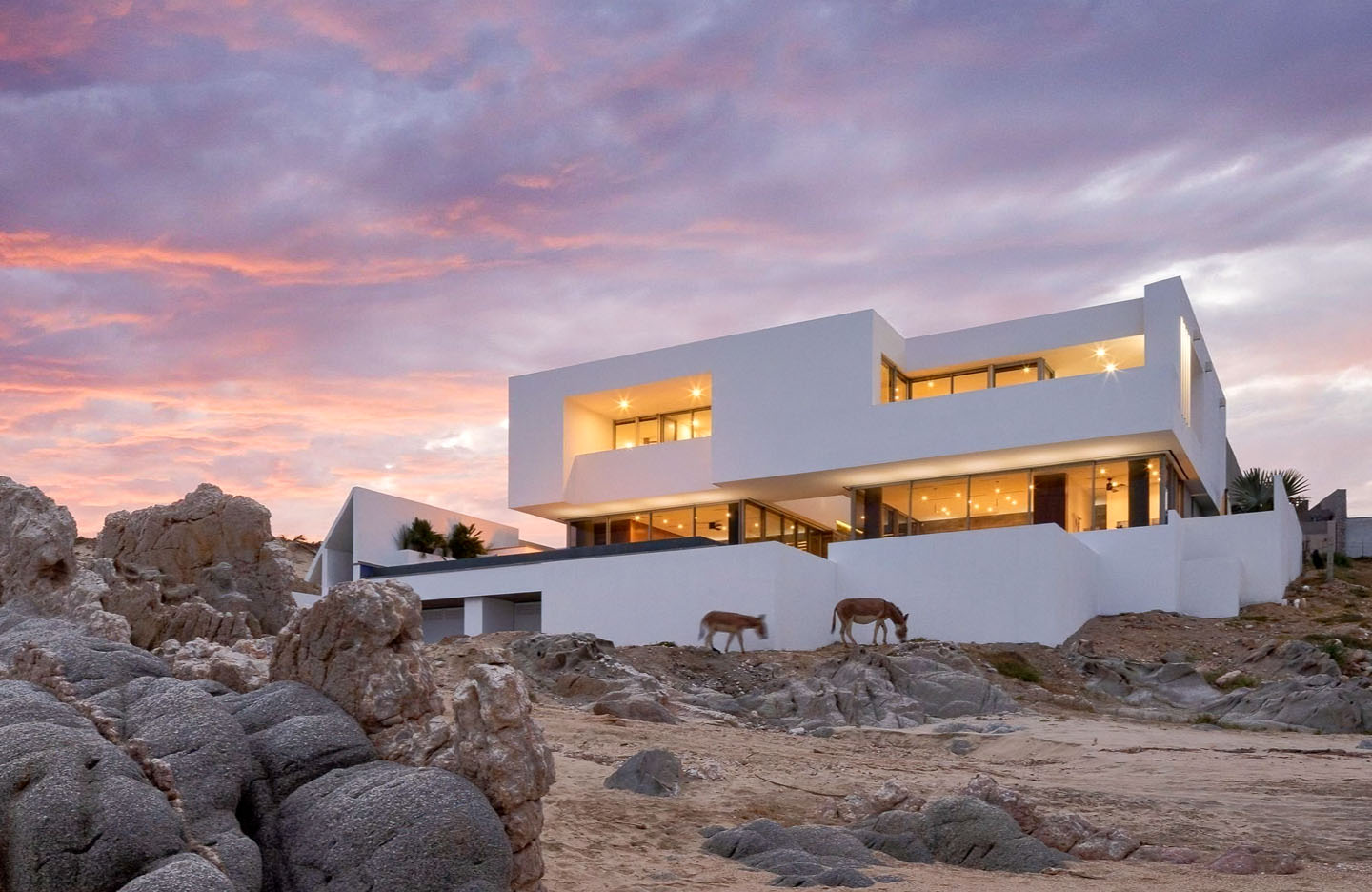One mistake people who do not live off-grid often make about people who do is thinking every one is a hardcore do-it-yourselfer hell-bent on hand-building their own idiosyncratic home from reclaimed materials. That may have been the case two decades ago, but not today, and certainly not in the tiny off-grid community of Los Zacatitos in the Mexican state of Baja California Sur, the location of this arresting modernist beachfront home designed by Campos Studio.
Zacatitos (locals drop the Los) is a collection of 200-plus off-grid homes and a single solar-powered restaurant. The close-knit community is beautifully isolated on the shores of the Sea of Cortez despite its proximity to San José del Cabo, 20 minutes away—the tangle of primarily unpaved roads in East Cape, where Zacatitos is located, makes this stretch of pristine coastal desert a deterrent to tourists.
Architect Javier Campos has been bouncing around on these dusty byways since 1997, when a friend newly flush with tech money sent him down to Zacatitos, a large, subdivided tract of palo verde-pocked scrubland “in the middle of nowhere—there were maybe 25 houses” to spend six weeks getting to know everything about the surrounding hot, arid desert and breezy seaside so Campos could design a vacation home that was deeply rooted in the region.
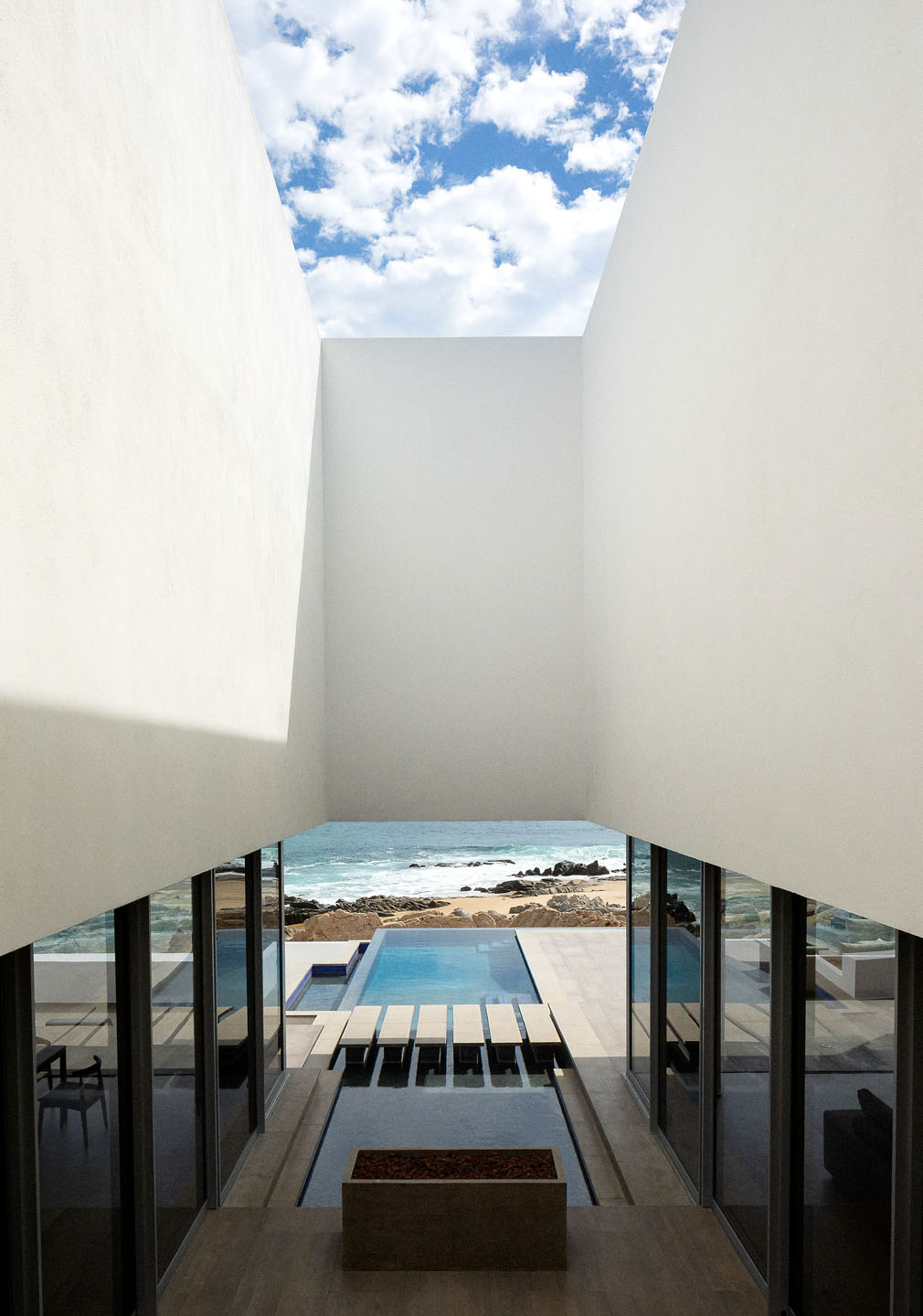
That agreeable fact-finding mission resulted in Zacatitos 01, the first of five self-sufficient dwellings Campos Studio has completed in the desert community. Each of these houses employs passive-design strategies integrated into the architecture that regulate the indoor climate by managing sunlight, shade, and air flow.
Campos says all the customary off-grid mod cons—equipment to generate power and store energy; hardware for collecting water; mechanisms for wastewater management—are obvious technical necessities but only part of the studio’s Zacatitos off-grid equation. “The other part is how do you reduce the amount of energy you need? How do you make the air flow, catch the breezes, provide shade?” Good passive design will address these concerns. If you are Campos and crew, your solutions will be elegant and invisible.
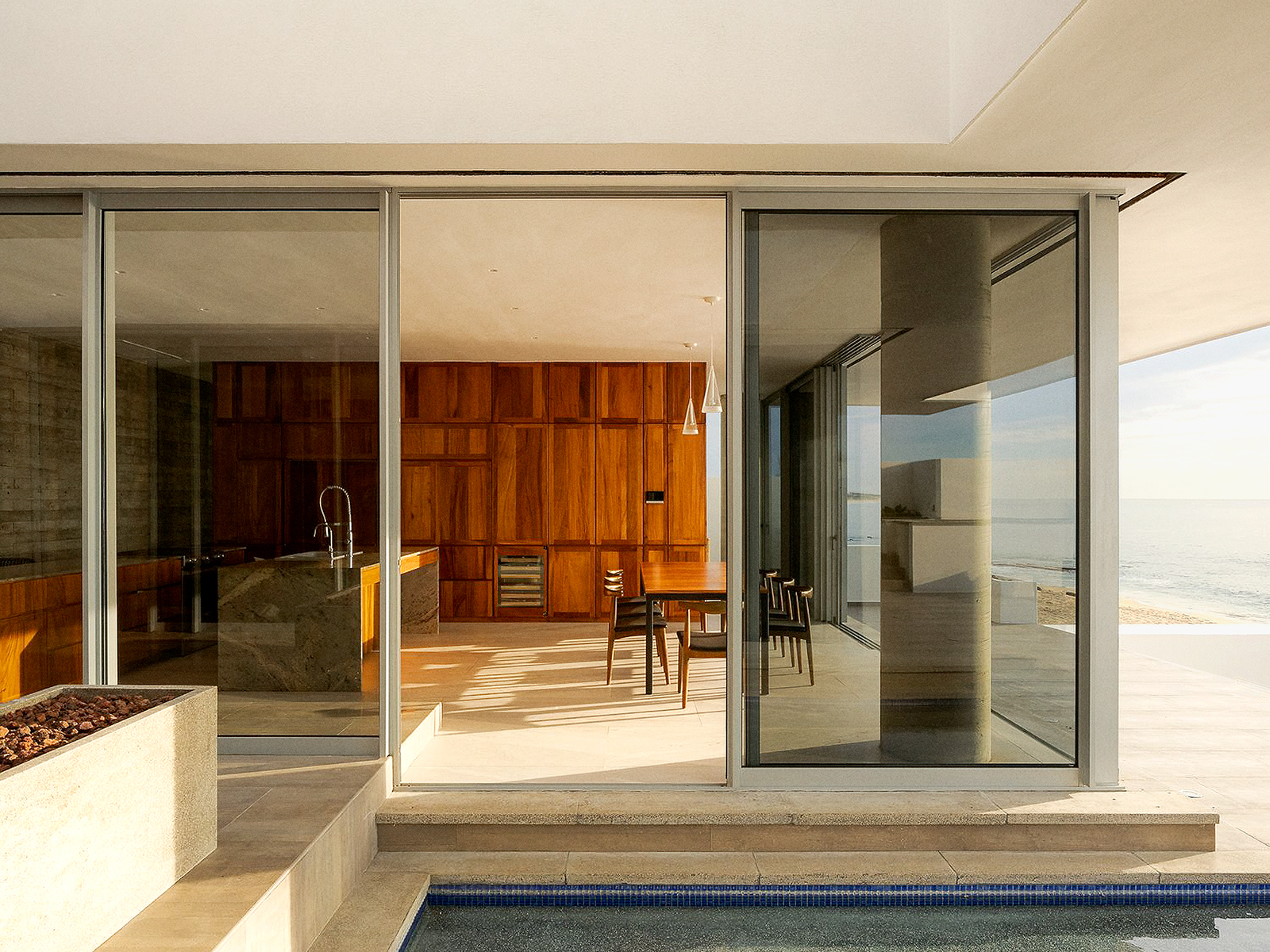
If no one told you beforehand that Zacatitos 05, designed by a team that included Campos and Jan Strelzig, was 100 per cent off-grid, you would likely be surprised. Most people, even those keen on architecture, do not associate beautifully rendered modernist design with “alternative” living.
Handsome, modernist “Zac 05” complements its coastal surroundings. From the shoreline, its strong horizontal geometric form appears to float above the mass of wave-rounded boulders that litter the beach. Although the building contrasts starkly with the landscape, the bold organic and inorganic elements carry similar visual weight, producing an appealing, well-proportioned picture.
At the top of the long open-air staircase, it is possible to look out over the landscape to catch the breaking surf or upward to the ever-changing sky.
Inside, nature feels nearby. At the top of the long open-air staircase that slices the house through the middle, it is possible to look out over the landscape to catch the breaking surf or upward to the ever-changing sky. From the broad, tiled decks on its beach side, nature feels even more immediate as pool water blends visually with seawater, and seawater bleeds into the sky.
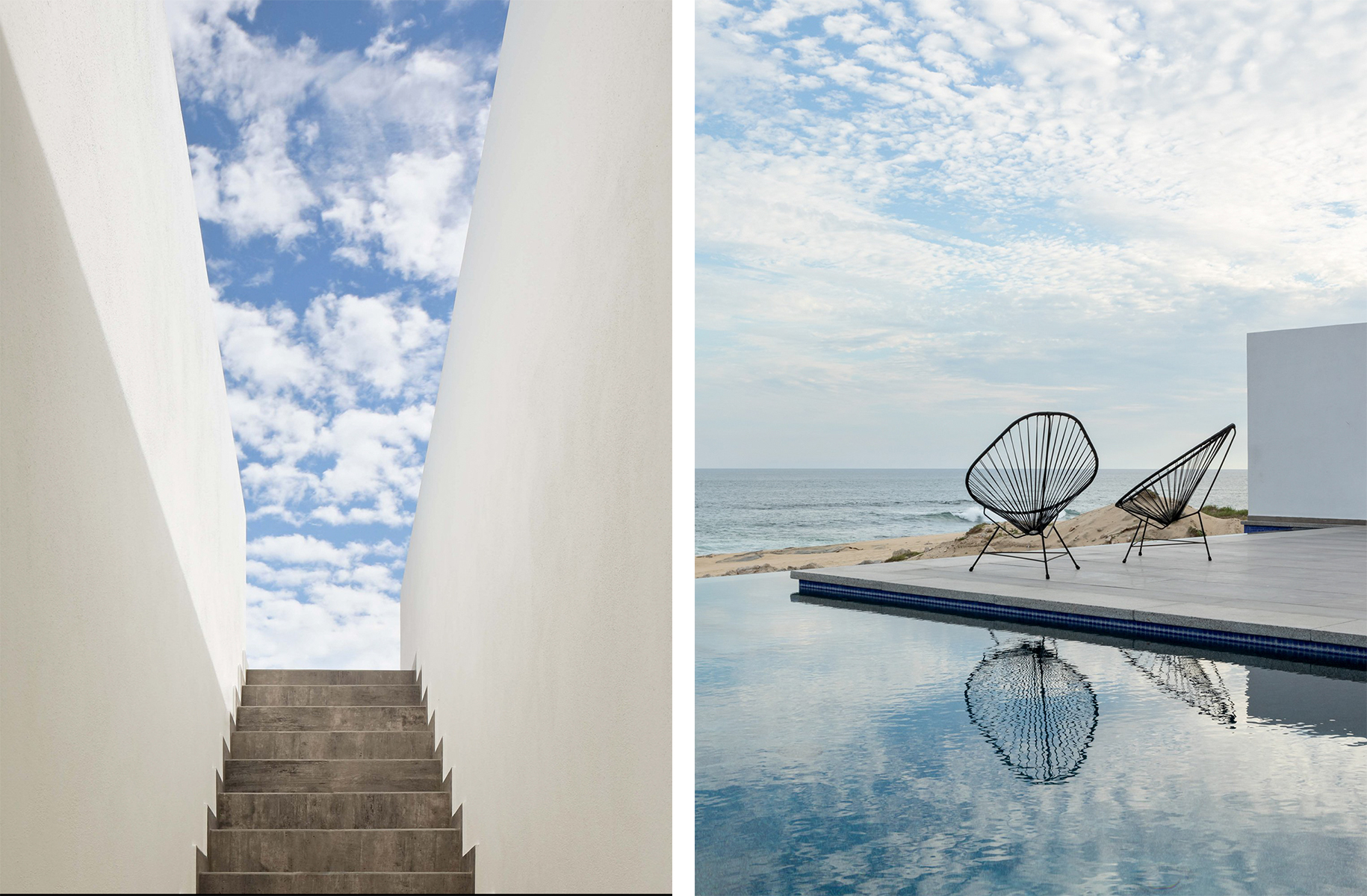
With their design for Zac 05, Campos and Strelzig hit all the high notes of classic modernist architecture, introducing harmonious abstract linear forms, extensive stretches of flat-white wall and floor-to-ceiling windows. Rejecting deliberate ornament as rigorous modernists do, they emphasized solid and empty space, rhythm and repetition, and the interplay of planes and shapes. The outcome is an artfully executed, visually arresting residence. And true to their practice of combining beauty with purpose, its most striking architectural features modulate the climate indoors.
Chief among these is the alfresco entry staircase. To block the sun’s intensity, it is narrow and deep. The high white walls on the upper floor, where the primary bedrooms are, transition to board-formed concrete and floor-to-ceiling retractable glass panels as you descend 18 steps to the main living areas. Campos describes the experience of entering the house as “processional.”
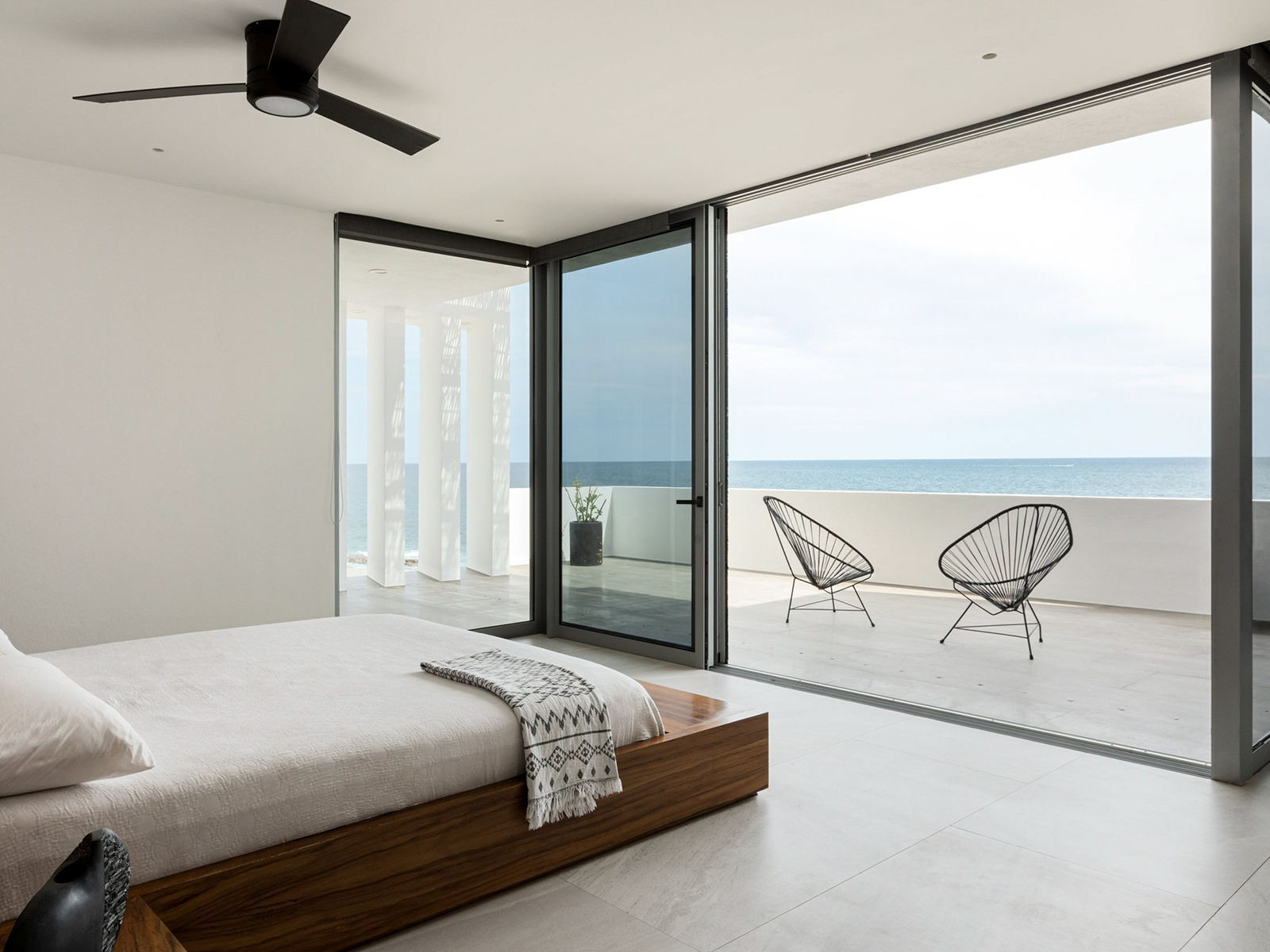
Grand as it is, this entrance is crucial to minimizing heat gain and enhancing air circulation on the first floor, where the living and dining rooms are separated by the open-air staircase, and each area features sliding floor-to-ceiling glass panels that form the walls on three sides. Opening and closing these panels affects the air flow up the stairs, altering the interior temperature. To illustrate, when the sliders on both the beach side and the stair side are open, the staircase acts like a vacuum, suctioning up sea breezes and circulating them for cooling relief before funnelling them up and out of the house.
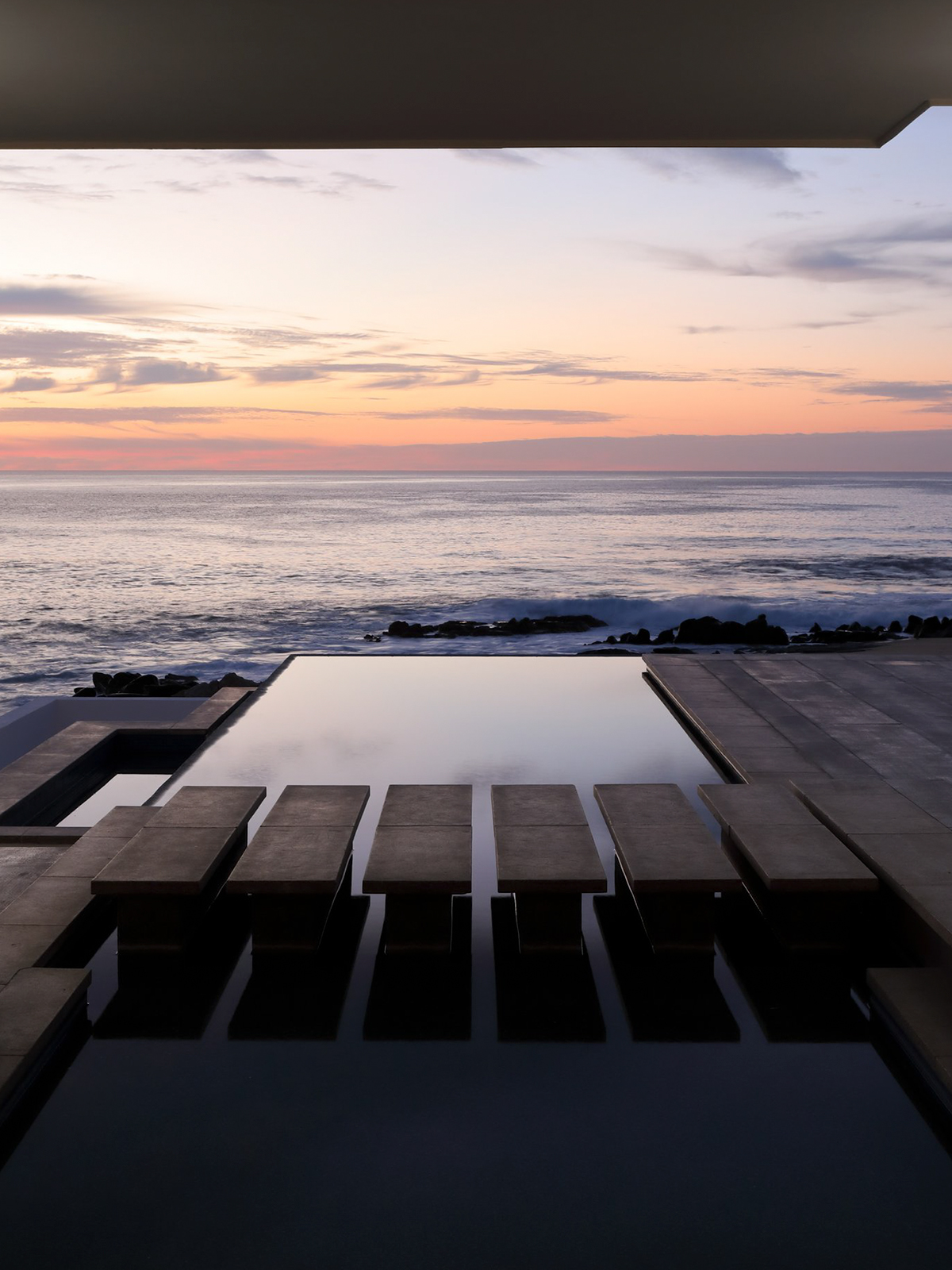
Cross ventilation for thermal comfort is hardly new, but because this house is entirely off-grid, it needs to do heavy lifting. Owner Molly Heilmann says the system works masterfully because the architects did their research. “What amazed us about Javier is that he did all sorts of studies on sun angles, on wind patterns, on how the air could move naturally and effectively so that the house would stay cool and still capture the most amount of sunshine.”
Campos Studio draws inspiration from indigenous and vernacular architecture that depended on natural and local ways of building before the existence of modern energy sources. The strategy involves using the building’s design to regulate the climate naturally rather than relying solely on technology or external power sources for climate control.
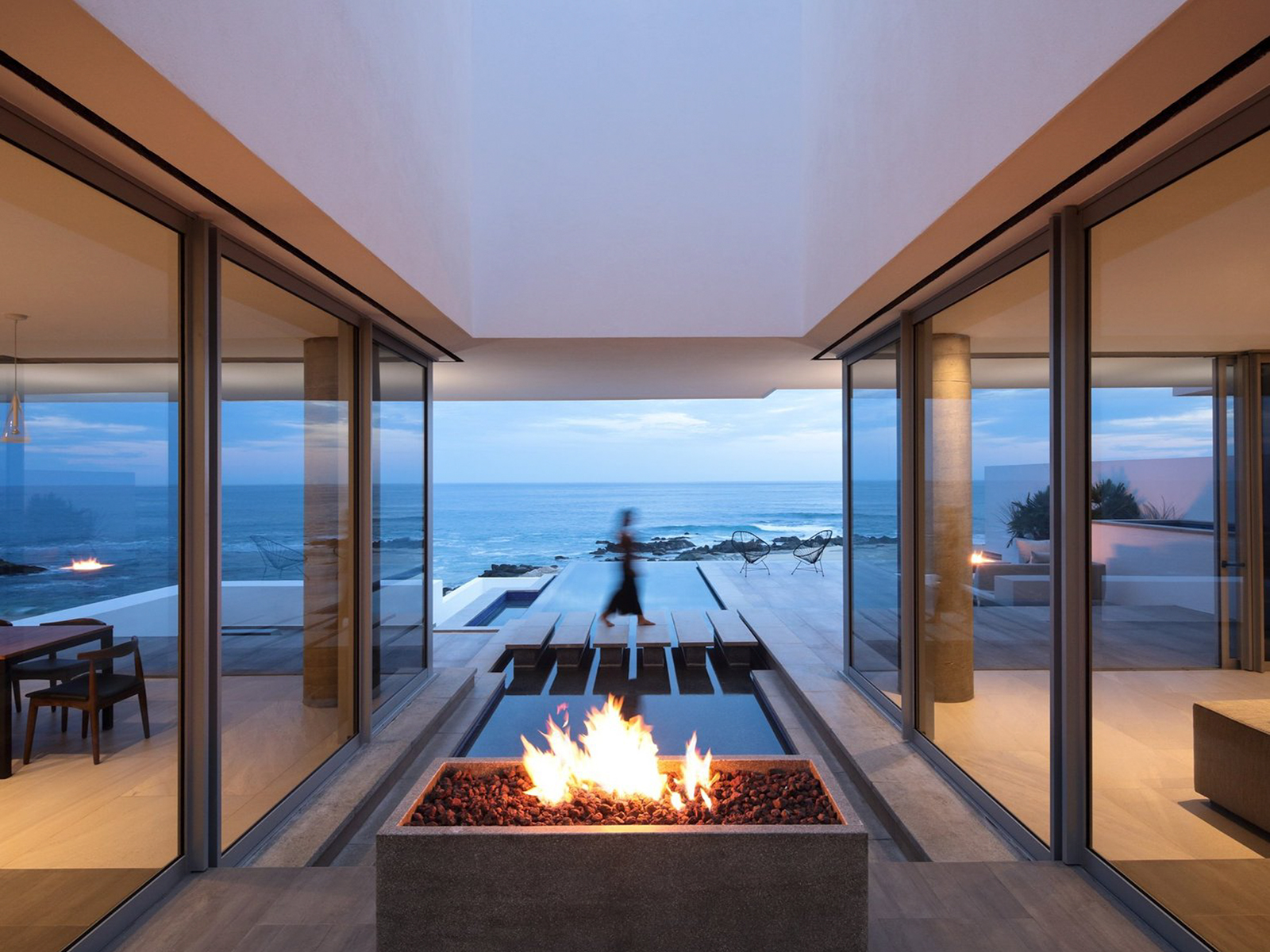
While every one of the five Zacatitos houses was designed to function without external power sources out of necessity, the studio believes builders everywhere would benefit from targeted passive strategies to decrease reliance on machinery regardless of the energy source. According to team Campos, we need to think about passive strategies as more than a means of energy performance—well-designed passive systems can actively reduce the need for grid support in the first place.
Read more from our Winter 2023 issue.

